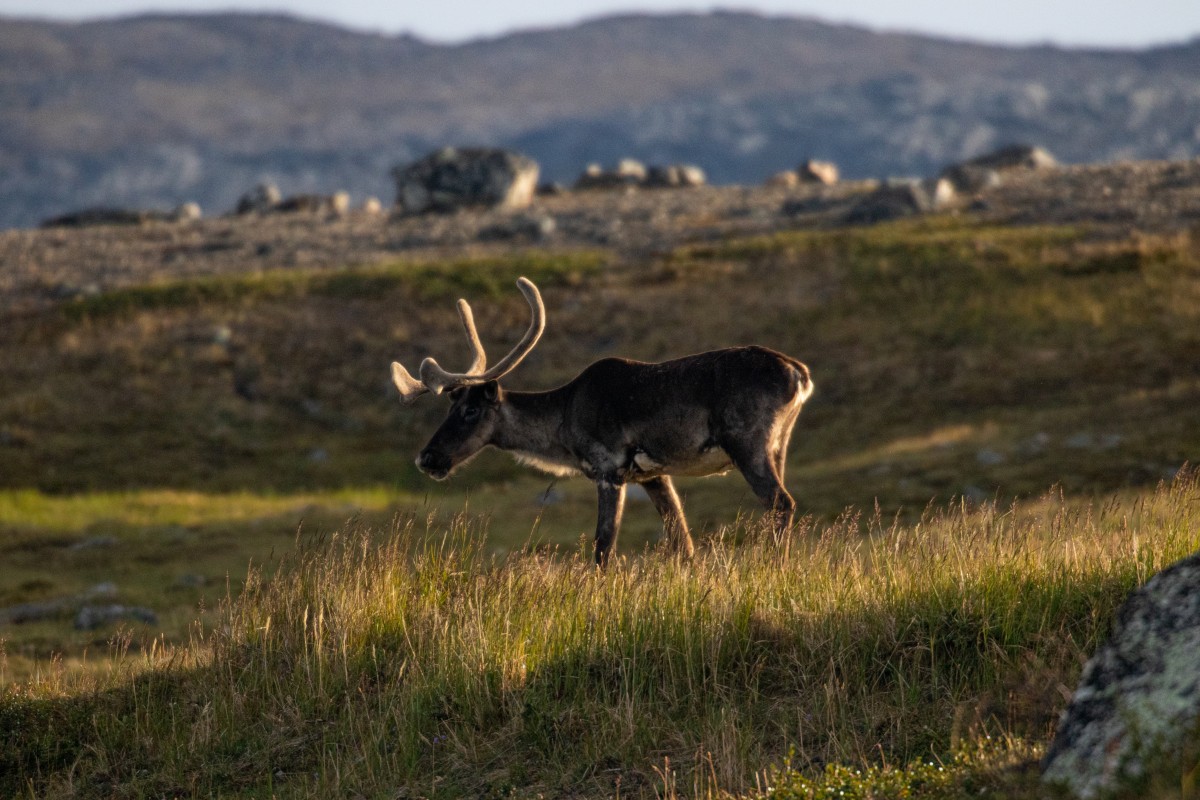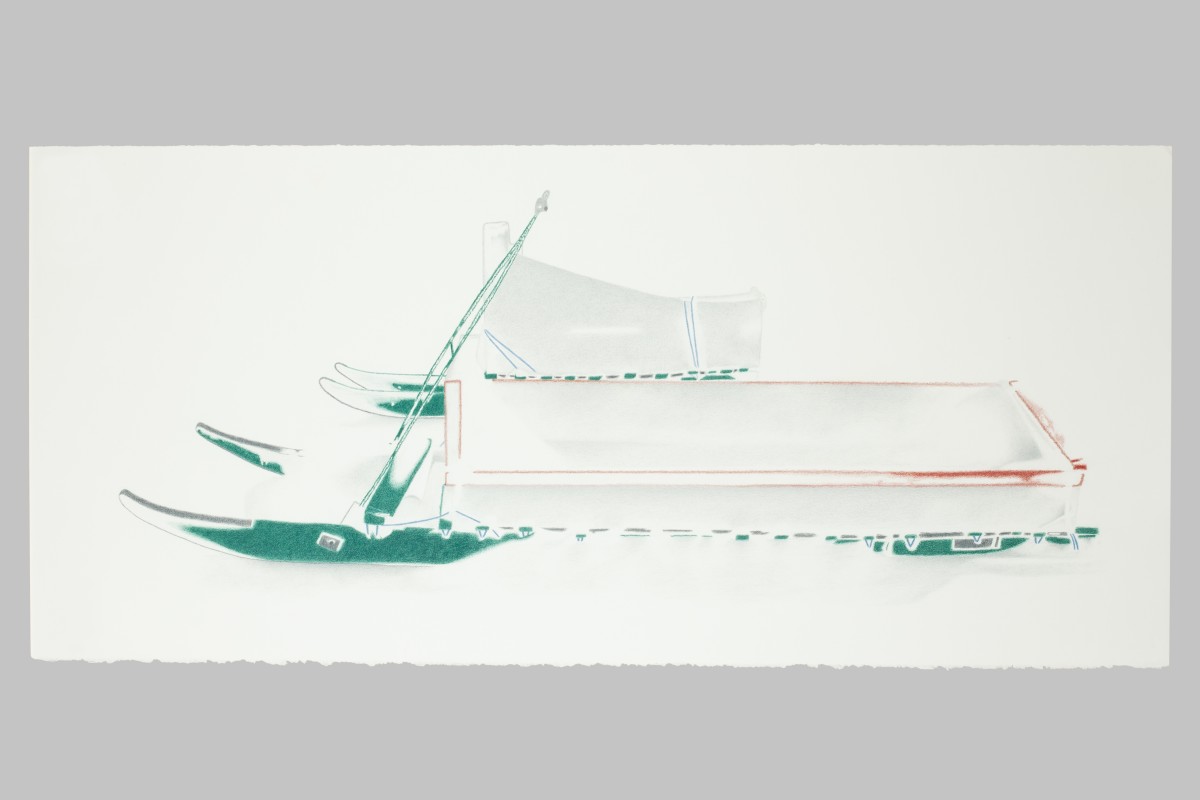Exploring Our Land, Our Art ᓄᓇᑦᑎᓂ ᑕᑯᒥᓇᕐᑐᖁᑎᕗᑦ
The Canadian Museum of Nature reveals the beauty of Nunavik through works by Inuit artists.
Taqralik Partridge with Isaac Partridge and Akinasi Partridge, Nunami, 2022. Installational view. Photograph by Pierre Poirier, Canadian Museum of Nature.
On view at the Canadian Museum of Nature through October 2024, Our Land, Our Art ᓄᓇᑦᑎᓂ ᑕᑯᒥᓇᕐᑐᖁᑎᕗᑦ explores objects and works created by Inuit artists of generations past and present. In collaboration with the Avataq Cultural Institute, contemporary artists from the Nunavik region were invited to create works inspired by objects from Avataq’s collections and grounded in the maker’s strong relationship with the land as well as their home communities. Visitors can explore artifacts used by Inuit 800 to 350 years ago and see the threads from past to present in Inuit art. The display of the old and new reveals the rich heritage of Nunavik through the perspective of those who share the same connection to the land as makers from centuries ago.
The contemporary Inuit artists included are Qumaq M. Iyaituk and Passa Mangiuk (drawings); Lucasi Kiatainaq (photography and video); Evie Mark and Akinisie Sivuarapik (throat singing); Taqralik Partridge/Isaac Partridge/Akinasi Partridge (beadwork and visual art) and Tupiq A.C.T. (circus performers).
Among the works on display is Nunami (2022) (image above), an intricate, large beaded amautik (coat) by artist and AGO Associate Curator of Indigenous Art (Inuit Focus) Taqralik Partridge. Designed together with Isaac and Akinasi Partridge, Partridge wanted to attribute the handcraftsmanship of creating ornamental clothing as a gesture that connects Inuit people to the land from which they are part of and inspired by. “I wanted to reflect that idea of everything coming from the land with this work. The large beaded amautik (parka) is in conversation with the small sculpture of a woman wearing an amautik,” said Partridge. “If everything comes from the land, that includes our clothing, and the shelter and warmth and beauty that it gives us. I included the dog sculpture as well because qimmituinnait (Inuit dogs) are such an important part of how Inuit have been able to travel great distances over land and ice.”
Artist Lucasi Kiatainaq from Kangiqsujuaq contributed four inkjet photographic prints and a video revealing vignettes of his life during a spring hunt. Inspired by the land and the animals of Nunavik, Kiatainaq reminisces about the many hours spent camping and hunting with his father through these photographs. “Hunting is the subject I had in mind when I chose Thomasie Kaitak’s sculpture,” explains Kiatainaq. “For me, it embodies that moment when a hunter experiences a feeling of uncertainty mixed with the adrenaline rush that comes with a success to come—a feeling that myself, my father and our ancestors have felt so often.”
Hailing from Ivujivik, visual artists, teachers and sister duo Qumaq Iyaituk and Passa Mangiuk expressed their connection with the land through pencil drawings depicting a motorized canoe and a qamutiik (dog sled), which have traditionally been important means of transportation for the community.
“We remember as children seeing a man boiling wood by the shore and wondering why they would boil wood—we can’t eat it! Qumaq found the courage to ask, and learned that it makes the wood soft enough to bend to make a qajaq (kayak),” said Iyaituk and Mangiuk. “We remember being impressed and thinking it will allow our grandfather and uncles to bring us food and share with the community. We understood how much love for each other it meant. Our drawings are sharing about how important making and using our own means of transportation were as survival skills for men to support our communities.”
Presented in Inuktitut, English and French, Our Land, Our Art ᓄᓇᑦᑎᓂ ᑕᑯᒥᓇᕐᑐᖁᑎᕗᑦ is on view at the Canadian Museum of Nature in Ottawa through October 2024. Click here for more information on the exhibition.


